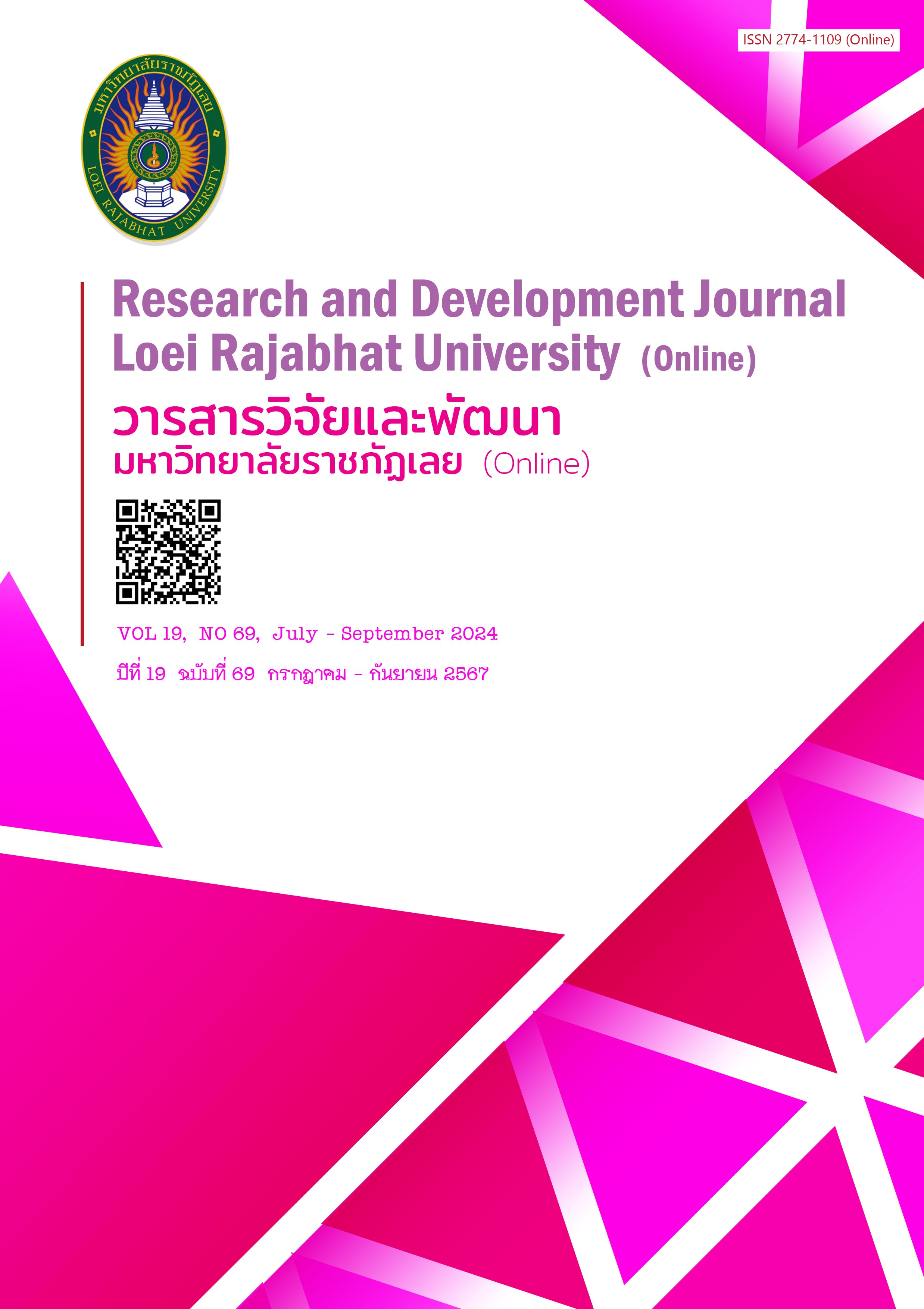The Scenario of Future Food Business Options for Small and Medium Enterprises
Keywords:
scenario, future food, business options, small and medium enterprisesAbstract
This academic article has the objectives to study the scenario of future food business options for SMEs and carry out strengths, weaknesses, opportunities and threats (SWOT) analysis of future food business options for SMEs. Content analysis is utilized with secondary data from various reliable and relevant sources to the topic of the study. Future foods are the foods which are created by using innovative knowledge to develop into environmentally friendly food products. Future foods still provide complete necessary nutrients for the human’s body and their taste remains the same to normal food. They are divided into 4 categories including functional food, medical food, organic food and novel food. Future food businesses are likely to grow in the future due to the changing behavior of today's consumers who are becoming environmentally conscious and aware of global food crisis. The macro-environmental factors that will affect the growth of this industry are the government's promotional policies, economic circumstances of consumers in each country, consumption behaviors and culture in each country including new food production knowledge and technology development. Small and medium-sized enterprises (SMEs) are more likely to succeed in their business operations due to increased awareness of environmental issues, development of technology and knowledge in food production, and further governmental policies to support business growth, but they have to handle potential threats which are food consumption culture that contrasts with future food, negative consumer attitudes towards future food and global economic slowdown.
References
คณะกรรมาธิการพาณิชย์และการอุตสาหกรรม. (2566). การพัฒนาอุตสาหกรรมอาหารแห่งอนาคต. รายงานการพิจารณาศึกษา, กรุงเทพฯ: คณะกรรมาธิการพาณิชย์และการอุตสาหกรรม.
รุ่งฤทธิ์ เพ็ชรรัตน์. (2564). สร้างอนาคตให้อาหาร ด้วยอาหารแห่งอนาคต. สืบค้นจาก https://plus.thairath.co.th/topic/everydaylife/100739.
วรัญญู อินทรกำแหง. (2565). นวัตกรรมอาหารเพื่อมนุษยชาติในอนาคต. สืบค้นจาก https://www.gqthailand.com/lifestyle/food-and-drink/article/futuristic-food-innovations.
สำนักงานสภานโยบายการอุดมศึกษา วิทยาศาสตร์ วิจัยและนวัตกรรมแห่งชาติ (สอวช). (2566). Future Food คืออะไร? ผู้ประกอบการต้องปรับตัวและคว้าโอกาสอย่างไรให้ทัน. สืบค้นจาก https://www.nxpo.or.th/th/16067/.
Baro, M. R., Casas, P., Díaz-Rizzolo, D. A., Batlle-Bayer, L., Adrià-Acosta, F., Aguilar, A., Medina, F. X., Pujola, M. and Bach-Faig, A. (2022). Edible Insect Consumption for Human and Planetary Health: A Systematic Review. International Journal of Environmental Research and Public Health, 19(18).
Bhat, R. (2021). Future Foods: Global Trends, Opportunities, and Sustainability Challenges. Cambridge: Academic Press.
Cech, P. (2022). Future of Food: How Food Technology Can Save the Planet. Retrieved from https://www.slaytonsearch.com/2022/10/future-of-food-how-food-technology-can-save-the-planet/.
Chen, L., Qi, W. and Lin, J. (2022). Impact of Environmental Concern on Ecological Purchasing Behavior: The Moderating Effect of Prosociality. Sustainability, 14(5), 1-18.
Desai, N. (2024). These are the innovators driving impact in future food systems. Retrieved from https://www.weforum.org/agenda/2024/05/innovators-reimagine-the-future-of-food-systems/
Elhoushy, S. (2020). Consumers’ sustainable food choices: Antecedents and motivational imbalance. International Journal of Hospitality Management, 89(2), Article No. 102554.
Galanakis, C. M. (2024). The Future of Food. Foods, 13(4), 506.
Godfray, C., Crute, I. R., Haddad, L., Lawrence, D., Muir, J. F., … Whiteley, R. (2010). Introduction: The future of the global food system. Philosophical Transactions of the Royal Society B Biological Sciences, 365(1554), 2769-2777.
Hartomo, A. and Kusumawardhani, R. (2018). Innovation Barriers and Their Impact on Innovation: Evidence from Indonesian Manufacturing Firms. Global Business Review, 1-18.
Hassoun, A., Cropotova, J., Trif, M., Rusu, A. V., Bobis, O., … Regenstein, J. (2022). Consumer Acceptance of New Food Trends Resulting from the Fourth Industrial Revolution Technologies: A Narrative Review of Literature and Future Perspectives. Frontiers in Nutrition, 9, 1-22.
Hetler, A. (2022). The future of the food industry: Food tech explained. Retrieved from https://www.techtarget.com/whatis/feature/The-future-of-the-food-industry-Food-tech-explained.
IIdiko, K. (2020). Sustainable food consumption intentions related to food safety among young adults. Analecta Technica Szegedinensia, 14(2), 26-34.
Knorr, D. and Augustin, M. A. (2024). The future of foods. Sustainable Food Technology, 2, 253-265.
Lindner, J. (2020). Fast Food Industry Statistics. Retrieved from https://worldmetrics.org/fast-food-industry-statistics/.
Malla, I. A., Rafiqui, A. R., Ayoub, O. B., Bhat, I. A. and Altaf, L. (2023). Fast food and beverage industry: impact on Human health and Environment: In Research Trends in Food Technology and Nutrition, 195-210.
Monaco, A., Kotz, J., Al Masri, M., Allmeta, A., Purnhagen, K. P., König, L. M. (2024). Consumers´ Perception of Novel Foods and the Impact of Heuristics and Biases: a Systematic Review. Appetite, 196, Article No. 107285.
Nordin, N. S. A. and Ruslan, N. A. (2022). A Study on Consumers Intention in Purchasing Organic Food: Case Study at Kuantan, Pahang. IOP Conference Series: Earth and Environmental Science, 1059, Article No. 012007.
O'Keefe, L., McLachlan, C., Gough, C., Mander, S. and Larkin, A. B. (2016). Consumer responses to a future UK food system. British Food Journal, 118(2), 412-428.
Qalati, S. A., Barbosa, B. and Deshwal, P. (2024). Consumer Behavior and Sustainable Marketing Development in Online and Offline Settings. Sustainability, 16(7), 2829.
Saguy, I. S., Silva, C. L. M. and Cohen, E. (2024). Emerging challenges and opportunities in innovating food science technology and engineering education. NPJ Science of Food, 8(1), 1-8.
Sowcharoensuk, C. (2022). The Future Food Industry. Retrieved from https://www.krungsri.com/en/research/research-intelligence/future-food-2022.
Stellar Market Research. (2023). Fast-Food Market: Industry Analysis and Forecast (2024-2030) Trends, Statistics, Dynamics, Segmentation by Product, End User, and Region. Retrieved from https://www.stellarmr.com/report/Fast-Food-Market/526.
The World Bank. (2021). Agricultural land (%of land area). Retrieved from https://data.worldbank.org/indicator/AG.LND.AGRI.ZS
The World Bank. (2023). Food Security Update | World Bank Response to Rising Food Insecurity. Retrieved from https://wwworldbank.org/en/topic/agriculture/brief/food-security-update.
United Nations. (2024). Population. Retrieved from https://www.un.org/en/global-issues/population.
USAID. (2023). United States Announces $29 Million Investment to Extend Two Feed the Future Innovation Labs. Retrieved from https://www.usaid.gov/news-information/press-releases/oct-05-0023-united-states-announces-29-million-investment-extend-two-feed-future-innovation-labs.
USDA. (2023). Lower income countries spend much higher share of expenditures on food than higher income countries. Retrieved from https://www.ers.usda.gov/data-products/chart-gallery/gallery/chart-detail/?chartId=107494.
Downloads
Published
How to Cite
Issue
Section
License
Copyright (c) 2024 Research and Development Journal, Loei Rajabhat University

This work is licensed under a Creative Commons Attribution-NonCommercial-NoDerivatives 4.0 International License.
ข้อความที่ปรากฎในวารสารฉบับนี้เป็นความคิดเห็นของผู้เขียนแต่ละท่าน สถาบันวิจัยและพัฒนา มหาวิทยาลัยราชภัฏเลย และกองบรรณาธิการ ไม่จำเป็นต้องเห็นด้วยและไม่มีส่วนรับผิดชอบใดๆ
สถาบันวิจัยและพัฒนา มหาวิทยาลัยราชภัฏเลย ขอให้ผู้อ่านอ้างอิงในกรณีที่ท่านคัดลอกเนื้อหาบทความในวารสารฉบับนี้






